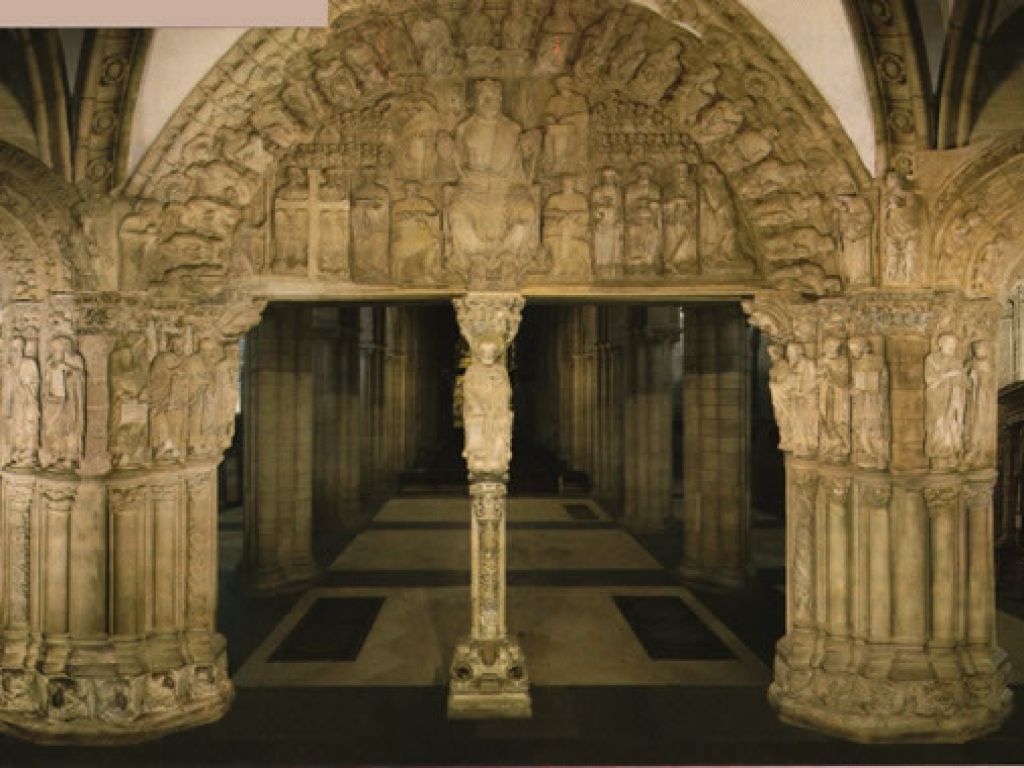The Portico of Glory: the Romanesque jewel of Santiago´s Cathedral
The Portico de la Gloria is one of the most important elements of the Cathedral of Santiago de Compostela, a cultural resource declared World Heritage Site by UNESCO. It is a sculptural and architectural ensemble considered one of the most outstanding works of Romanesque art. Its majestic beauty fascinates millions of people who have approached and still come nowadays to contemplate this wonderful work of art.
Around 1168, King Ferdinand II of León entrusted the illustrious sculptor Mestre Mateo to create a good artistic work for the main entrance of the Cathedral of Santiago de Compostela. Twenty years later, one of the most important creations in the history of art was completed. After more than 800 years, nobody doubts of the cultural legacy and value of this masterpiece.
The Portico is formed of more than 200 figures, the most relevant being placed in the central arch and the archivolt. In the central arch the Apocalypse is staged. After resurrecting, Jesus Christ returns to the world surrounded by the four evangelists, represented here with their symbolic features: Luke with the bull; John with the eagle; Mark with the lion; and Matthew with the angel. On the top of this set, in the archivolt, the 24 elders of the Apocalypse talk to each other while they tune their instruments to sing the song of the Glory.
This scene is of great interest for the History of Art and, by extension, for the History of Music and for Musicology, since it is essential to understand how music was made in the early Low Middle Ages.

Within the field of Musicology, the discipline of Organology is responsible for the study of the instruments: history, evolution, sounds, uses, etc. Thus, experts studied in depth this representation of Mestre Mateo to be able to reconstruct the instruments of the time, its dimensions and its ways of interpretation. Therefore, they were able to expand knowledge about music in that distant era.
The ancient instruments that appear in this precious image are 14 different types of fidulas, four psalteries, two harps and an organistrum. They are perfectly arranged and ordered logically by their sounds. In this sense, we are facing an authentic old orchestra. The physical characteristics of the instruments are represented with fidelity, another example of the meticulous work of Mestre Mateo.
The most striking instrument of the ensemble is the organistrum, essential for the development of polyphony in the History of Music. It is placed in the central space of the representation and it is held by two elders. To make the organistrum sound, one of the musicians had to turn the handle and the other played the keyboard. In the Renaissance, this medieval instrument fell into disuse and evolved to reach the current hurdy-gurdy.
At the moment, the Portico of Glory is under restorarion, and it is not possible to contemplate Maestro Mateos' creation. However, inside the cathedral, information panels have been set up to show us the sculpture and how they are working to recover our valuable monument. From ArtNatura we encourage you to discover more about the Portico of Glory by visiting the inside of the Cathedral with one of our professional guides.

